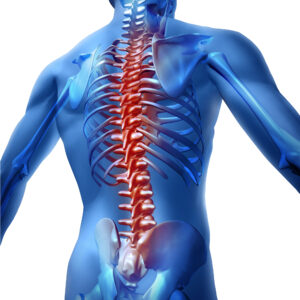What is a Spinal Cord Stimulator?
Spinal cord stimulation therapy is a practice in which a pacemaker-like device called a Spinal Cord Stimulator (SCS) is implanted which sends low-level electrical pulses through very thin wires directly into the spinal cord. These electrical pulses are intended to block or disrupt pain signals from reaching the brain.
How do you prepare for implantation of a Spinal Cord Stimulator?
Typically the implantation of a stimulator device is preceded by a trial period to determine whether your pain responds well to electrical intervention. Most patients will spend a week with a temporary implant which can be easily removed. If this bears promising results, the permanent device will be implanted. You should avoid eating or drinking anything for at least six hours prior to getting an SCS implanted. Dress comfortably and plan on having someone on hand to drive you home following the procedure.
How do you prepare for implantation of a Spinal Cord Stimulator?
Typically the implantation of a stimulator device is preceded by a trial period to determine whether your pain responds well to electrical intervention. Most patients will spend a week with a temporary implant which can be easily removed. If this bears promising results, the permanent device will be implanted. You should avoid eating or drinking anything for at least six hours prior to getting an SCS implanted. Dress comfortably and plan on having someone on hand to drive you home following the procedure.
Why is Spinal Cord Stimulation performed?

An SCS is generally implanted in situations where the patient is suffering from chronic pain in the back, arms, or legs which has not responded to other pain treatment methods. It is most frequently used for chronic back pain, especially back pain that appears after surgery. It can also be used to address nerve or heart pain. Implanting a Spinal Cord Stimulator does not cure the causes of chronic pain but it can mask the pain itself and improve quality of life.
What can you expect during Spinal Cord Stimulator surgery?
The procedure requires two incisions, each around three inches in length. One incision, in the lower torso, allows insertion of the battery portion of the device and the other, along the spine, allows the electrodes to be sutured in place. Once the device is connected and functioning, the incisions are closed. Surgery is usually performed under local anesthesia and your doctor may talk to you and ask questions throughout the implantation process.
What is the followup and recovery like for Spinal Cord Stimulator implantation?
This is an outpatient surgery and you will return home the same day as the procedure. Your incisions should stay dressed over the next three days or so, and may cause some pain during these early stages of the healing process. It’s important to avoid any stretching or twisting that may reopen the incisions while they are still healing. Your doctor will work with you to establish a recovery timeline, but you will generally want to avoid strenuous activities for a couple weeks following surgery. Your doctor will give you approval when you are ready to return to work and regular activities.
What are the potential risks for Spinal Cord Stimulator surgery?
Any surgical procedure comes with the risk of bleeding or infection, and while rare, these complications may occur following SCS implantation. The device itself may not stay put if it is not placed properly, and it’s also possible to damage the body through trauma or physical activity after it is implanted in the body. In highly unusual circumstances, insertion of the device may cause damage to the spinal cord, which can have extremely serious consequences.

